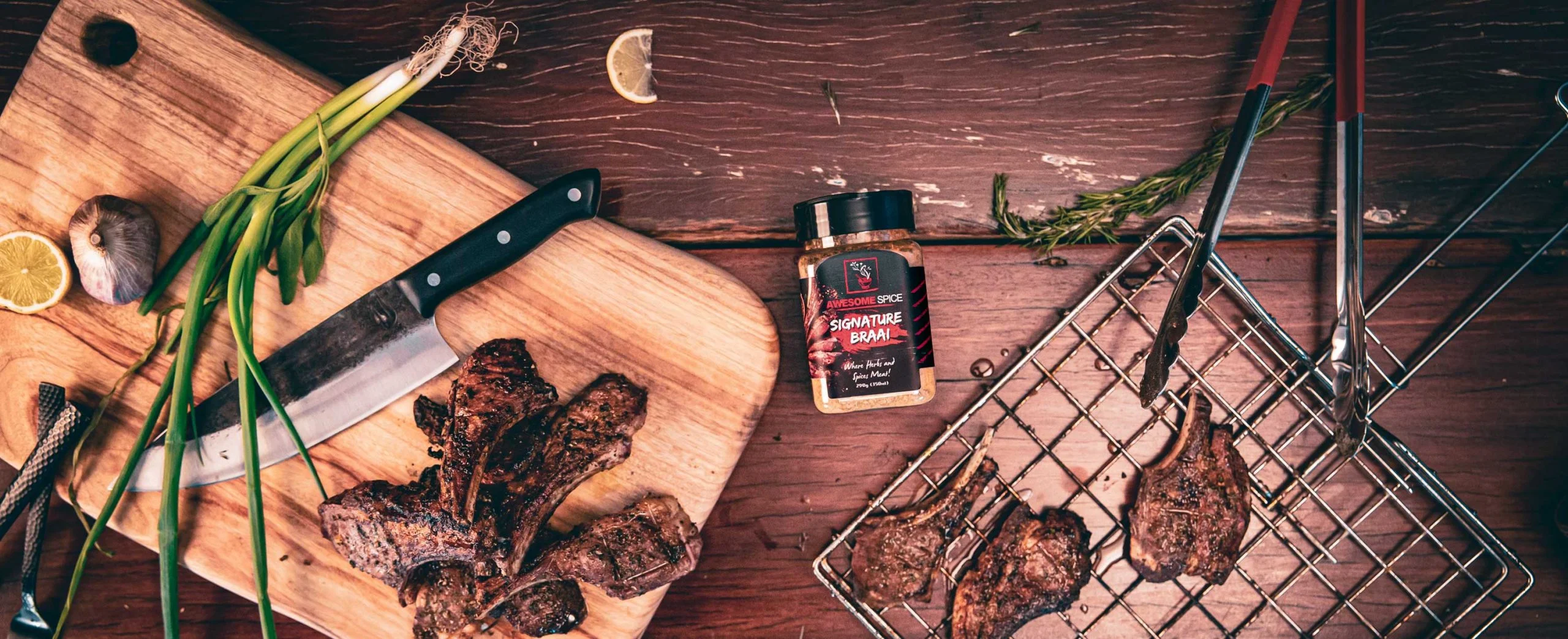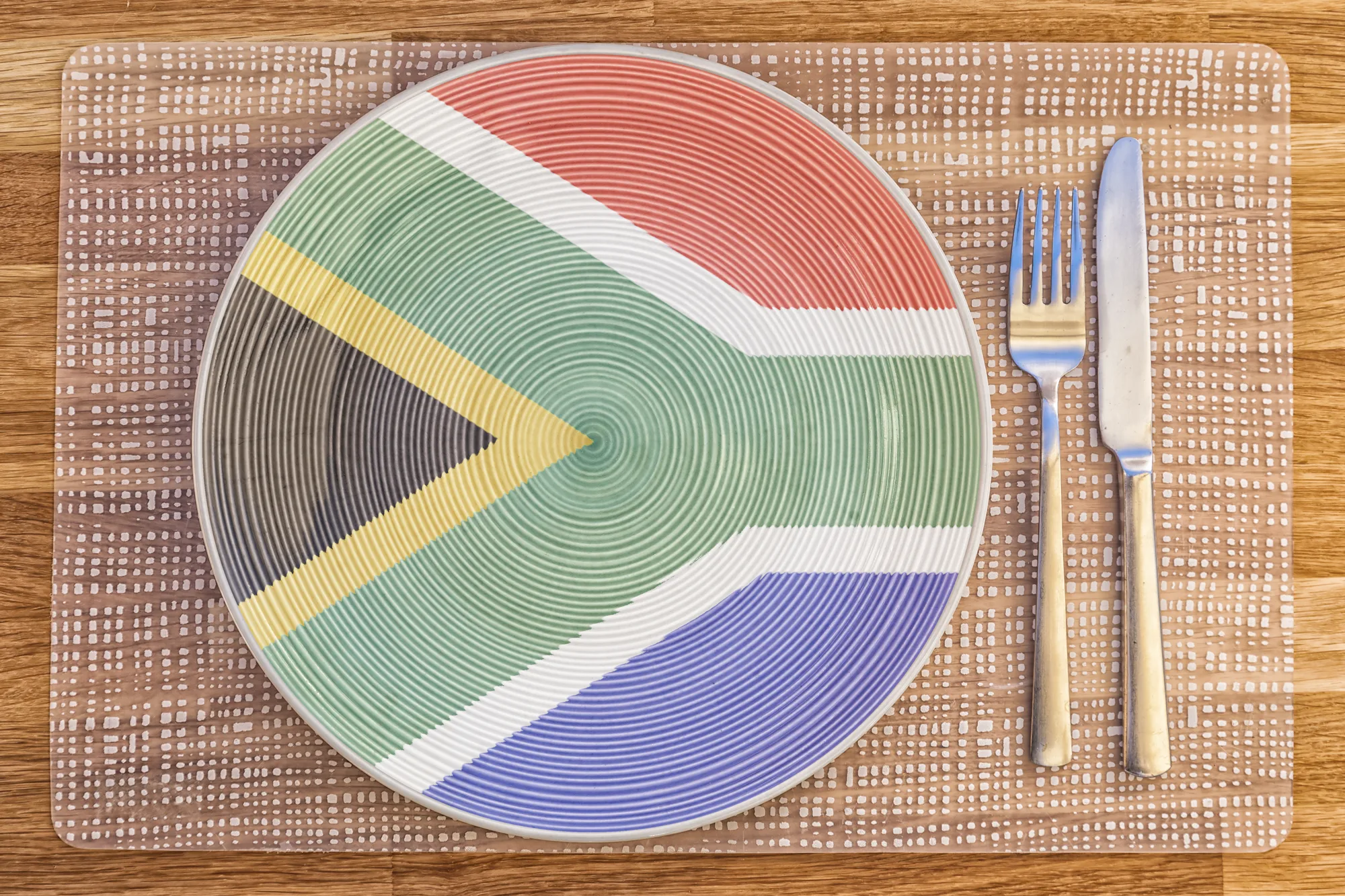A Taste of South Africa: A Journey Through Culture, History, and Food
South Africa’s food culture is a vibrant tapestry woven over centuries, shaped by indigenous traditions, colonial influences, and immigration from around the world. Each dish tells a story—of survival, adaptation, resilience, and celebration. Today, South African cuisine stands out for its diversity and welcoming spirit.
This article explores the key eras and cultures that have shaped South Africa’s remarkable culinary landscape, illustrating how each contributed to the flavours and techniques that define the country’s cooking.
1. Indigenous Foods: The Earliest South African Cuisine
Long before European settlers arrived, the Khoisan (San and Khoi) and later Bantu-speaking peoples developed ingenious ways of sourcing and preparing food, many of which still influence modern South African cooking.
Khoisan Influence: The First South African Food Culture
- San (Hunter-Gatherers): Lived off the land, hunting wild game such as springbok, kudu, and eland. They also foraged for plants, tubers, and roots (including wild legumes and tsamma melons for hydration), and ate mopane worms and locusts for their high protein content.
- Khoi (Pastoralists): Introduced livestock farming—cattle and sheep—leading to amasi (fermented milk), still a staple today. Their herb-seasoned meats, grilled over open fires, can be considered the earliest form of braai. They also developed fat-based cooking methods using animal fat instead of vegetable oils.
Bantu Migration: Introducing Grains and Agriculture
From around 500 to 1500 CE, Bantu-speaking peoples (including the Xhosa, Zulu, and Sotho) brought:
- New Grains: Sorghum and millet, used to make ting (a fermented porridge).
- Umngqusho: A beloved dish of samp (coarsely crushed maize) and beans, a staple in Xhosa cuisine.
- Cattle as Wealth: Intensified livestock farming, making cattle central to food, wealth, and status.
Did the Bantu Braai? While Bantu-speaking communities did use open flames for cooking, slow-cooked stews and boiling in clay pots were more common. Grilling meat over coals—today’s quintessential braai style—was more prominent among Khoi pastoralists and later popularised by Dutch settlers (Voortrekkers).
2. Colonial Influences (1600s–1800s): Dutch, French, British & Portuguese Contributions
From the 15th century onwards, European explorers and settlers introduced new crops, spices, and cooking methods that transformed the region’s culinary scene. The Portuguese sailed by early, while the Dutch and British established enduring colonies. Meanwhile, French Huguenots settled in the Cape, each group leaving a distinct imprint on local food traditions.
Dutch Influence (1652 Onwards): The Backbone of Afrikaans Cuisine
When the Dutch East India Company (VOC) established a settlement at the Cape in 1652, they brought European farming and baking traditions. They also helped formalise the braai, building on Khoisan open-fire cooking methods.
- Potjiekos: A slow-cooked stew of meat and vegetables prepared in a cast-iron pot over an open fire.
- Boerewors: A spiced sausage, often coiled, and grilled to perfection over hot coals—central to any braai.
- Melktert: A creamy custard tart sprinkled with cinnamon.
- Beskuit (Rusks): Twice-baked bread, ideal for dunking in coffee.
- Stampmielies: Crushed corn cooked into a nourishing porridge.
- Koejawel Konfyt (Guava Jam): Showcases early fruit-preserving techniques.
Braai, Biltong & the Voortrekkers: As the Dutch settlers (Voortrekkers) journeyed inland in search of new land, they relied on self-sufficiency and communal living, shaping many of the food traditions still cherished today. One of their most iconic practices was forming a laager—a defensive circle made by positioning ox-wagons around a central space. Within this enclosure, fires were lit, food was prepared, and meals were shared, making the open-fire cooking experience a daily necessity and a cultural tradition that would later define the South African braai.
With no access to refrigeration, the Voortrekkers needed to preserve food for long and uncertain journeys. This necessity gave rise to biltong and droëwors, air-dried, spiced meats that could last for months, providing a vital source of protein and sustenance. Freshly hunted game and livestock were also slaughtered, and meat was either cooked immediately over open flames or cured for later use.
Over time, the braai became ingrained in the Voortrekker way of life—not just as a means of cooking but as a social and cultural ritual, where families gathered around the fire after a long day’s trek. This tradition of cooking over an open flame, first practised by the Khoisan, evolved through the centuries and remains one of the most beloved aspects of South African food culture today.
French Huguenots (Late 1600s): Masters of Wine & Baking
Seeking refuge from persecution, the Huguenots settled in regions like Franschhoek and Stellenbosch, bringing:
- Wine-Making Expertise: Laid the groundwork for South Africa’s world-class wine industry.
- Breads & Pastries: Introduced delicate loaves and pastries, enriching local baking.
- Fruit Orchards: Sparked fruit farming and preserving practices that further shaped Cape cuisine.
British Influence (1800s): Meat Pies & Street Foods
British colonial rule contributed a range of culinary traditions, including:
- Pies & Puddings: Hearty offerings such as steak-and-kidney pie.
- Fish and Chips: A simple yet enduring coastal favourite.
- Chutneys & Relishes: Staple condiments for sandwiches and braai meats.
Township Evolution: As cities expanded, a blending of British and Dutch street foods evolved into iconic South African staples like slap chips, bunny chow, and the Gatsby.
3. Cape Malay & Indian Flavours: A Legacy of Spice
Enslaved and indentured people brought over by the Dutch and British from regions such as Indonesia, Malaysia, and India gave rise to the distinctive Cape Malay cuisine. Indian communities also settled in Natal (present-day KwaZulu-Natal), introducing Durban’s famous curries.
Signature Dishes:
- Bobotie: Spiced minced meat baked with an egg custard topping.
- Denningvleis: A sweet-sour lamb stew distinctive to the Cape Malay tradition.
- Bunny Chow: A hollowed-out loaf filled with curry, especially popular in Durban.
- Samosas & Koeksisters: Fried pastries, typically savoury (samosas) or sweet (Cape Malay koeksisters).
Cape Malay spice blends—featuring cinnamon, cardamom, and cloves—have gradually found their way into all sorts of modern South African dishes, from boerewors seasoning to innovative braai marinades.
4. Township Foods & Modern South African Comfort Dishes
South Africa’s urban migration led to the creation of vibrant township cuisines, merging indigenous cooking with Dutch, British, and Cape Malay influences.
Street Food Favourites:
- The Gatsby: A colossal sandwich stuffed with chips, steak, polony, or calamari, often topped with tangy atchar.
- Vetkoek: Deep-fried dough buns filled with savoury mince or sweet jams.
- Slap Chips: Soft, vinegar-soaked fries, renowned for their tangy, salty kick.
- Walkie Talkies: Chicken feet and heads, considered a delicacy in many townships.
- Chakalaka: A spicy vegetable relish often paired with pap or bread.
5. Cured & Dried Meats: Biltong, Droëwors
While braai culture takes centre stage, cured and dried meats are a mainstay of South African snacking and travel foods.
- Biltong: Air-dried, spiced meat, most commonly beef or game (such as kudu or springbok). The distinctive dry-curing process produces intense flavours and a satisfying chew.
- Droëwors (Drywors): Essentially dried boerewors, formed into thin sausages and seasoned. Droëwors is perfect for long journeys or simply enjoyed as a convenient, flavour-packed snack.
These dried and cured meats, capture the essence of South African meat traditions— flavourful, and proudly local.
6. Sweet Treats & Drinks: A Taste of South African Hospitality
No South African feast is complete without a sweet finale and a comforting drink.
Classic Desserts:
- Koeksisters: Syrup-soaked pastries, either twisted and crunchy (Afrikaans style) or lightly spiced (Cape Malay style).
- Malva Pudding: A caramel-rich, spongy dessert typically served warm with custard.
- Peppermint Crisp Tart: A chilled caramel treat layered with peppermint chocolate.
Favourite Drinks: Rooibos tea, unique to the Western Cape, and Amarula, a creamy liqueur made from the marula fruit, both hold cherished places in South African beverage culture.
Also See:
The Heart of South African Braai Culture: A Tradition of Community and Celebration
Conclusion: A Culinary Heritage Built on Diversity
South African food is far more than sustenance—it is a testament to the country’s history of migration, cultural blending, and shared traditions. Whether you feast on boerewors straight off the braai, snack on biltong and droëwors, enjoy a Cape Malay curry, or tackle a towering Gatsby, you are tasting the collective heritage of a nation that embraces diversity.
Each dish is a story of perseverance and community, bound by a shared love of good food and the spirit of togetherness. This is the unique essence of South African cuisine: a celebratory melting pot of flavours, shaped by centuries of innovation and cultural exchange.
Visit our Recipe page for some traditional South African Food ideas.




